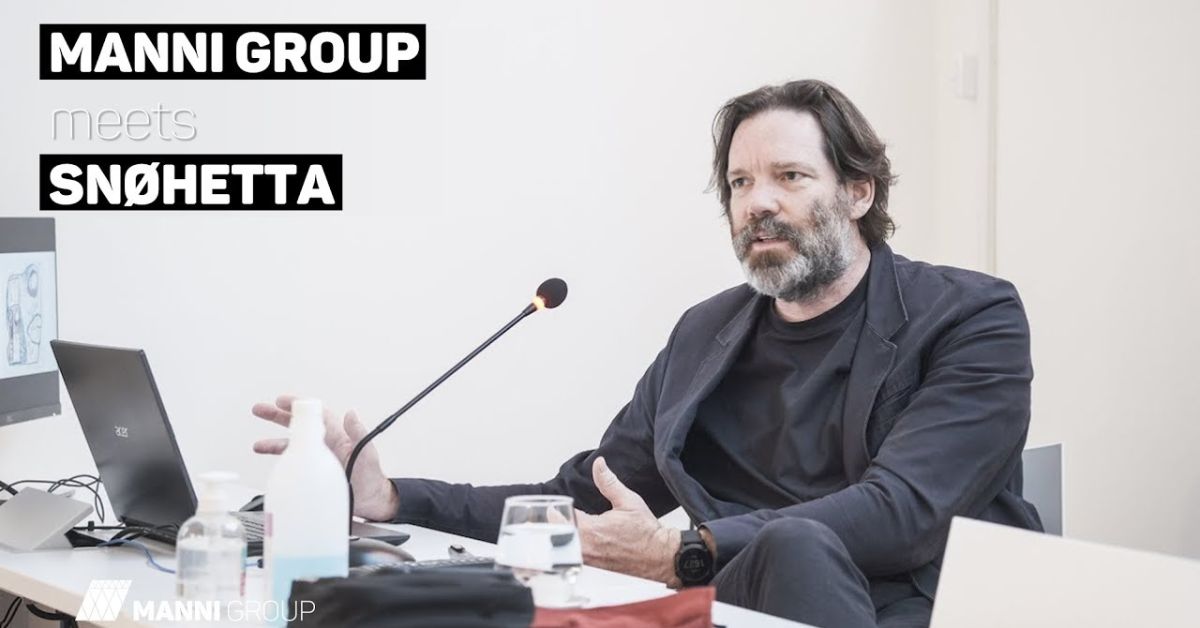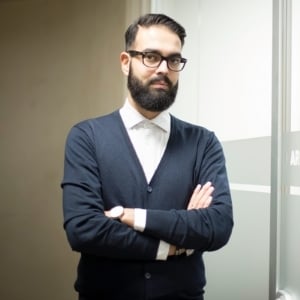Architectural Talks, the interview series produced by Manni Group in collaboration with Yacademy, meets Patrick Lüth, partner and managing director of the Innsbruck office of the Snøhetta firm, for the second time.
At the previous meeting, among other topics, Lüth spoke about the importance of considering steel as a smart building solution for the future of architecture, and explained why greenroof is at the heart of Snøhetta's building philosophy.
You can read the entire interview at this link.
In this second interview, Manni Group's Franziska Vofrei asked Patrick Lüth about Snøhetta's commitment to environmental sustainability, what role the architect will play within a society that is increasingly shifting towards a digital world and whether the changes imposed by the pandemic are really irreversible, and other questions regarding Snøhetta's commitment to a more sustainable future.
Here is what you will find in this article:
Snøhetta: design for social sustainability
Snøhetta is one of Europe's most famous architecture and design firms with headquarters in Oslo, a branch office in New York and offices in cities all over the world, including Paris, Hong Kong and Innsbruck.
Their philosophy is based on the well-being that architecture, together with the natural beauty of the landscape, can offer mankind.
For more than 25 years, Snøhetta has worked internationally on a range of cultural, public and landscape projects, always putting inclusivity and social sustainability at the centre of its work.
Thanks to this particular approach, the firm has managed, over the years, to win numerous awards and become a benchmark for other architectural firms.
Some of the most significant works built by Snøhetta are:
During this interview, Patrick Lüth will explain what Snøhetta's commitments to ecological sustainability are and how he intends to achieve them, why the role of the architect is not endangered by an increasingly digitised world, and how the pandemic may have helped to help build a more sustainable world.
Manni Group interview with Patrick Lüth
Below is our interview with Patrick Lüth.
Franziska Vofrei: Awareness and attention towards ecological sustainability is increasing.
The result of this debate is that the term “greenwashing” has been coined to distinguish between two types of behaviour: that of those who aim to create a positive contribution to the environment and that of those who do not.
Snøhetta has always been a pioneer in this regard and built one of the first buildings with almost zero energy costs.
How is Snøhetta committed to sustainability today?
Patrick Lüth: Social sustainability has been a theme in Snøhetta's history from the very beginning.
We have built an opera house in Oslo with a roof that thousands of people can walk on, a public, open and democratic library in Alexandria and we try to build places that people like: this creates an emotional bond that leads to social sustainability.
This is also very important from an ecological point of view because cities that are loved by people last longer.
Demolishing a building after 20 years has a huge ecological impact.
If it lasts a long time and the cities are used, there will be great ecological benefits.
Regarding the core issues of environmental sustainability, we have already erected some so-called zero-emission buildings in Scandinavia.
We try to focus not only on the operation but also on the entire life cycle and, from this point of view, grey energy, i.e. “embodied energy”, plays a more important and much needed role and this is what we need to work on.
Unfortunately, as we all know, concrete is a very bad material because it produces a lot of CO2 and cannot be reused later in its life cycle, unlike, for example, steel constructions whose materials can be recycled in the future with relatively low energy consumption.
Therefore, we try to look at these projects in a very holistic way with a life-cycle CO2 balance that varies from region to region.
We normally estimate 60 years to create this CO2 balance to include all the parameters that contribute to the construction activity, such as transport on site, and we even go so far as to include employee meals, so that it can truly be said that it is a building that absorbs more CO2 than it uses during its lifetime.
F.V.: Architectures have always been designed to respond to physical programmes and models. Nowadays, however, more and more intangible measures are emerging: the key word is “metaverse”. What role does the architect play in a society that is increasingly digitising its actions and ideals?
P.L.: We do not think that the role of the architect is diminishing, mainly for two reasons.
First of all, someone has to design these digital worlds: it is something that, personally, I find a bit tedious, but it is a role.
However, the most important thing to keep in mind is that, through interaction with physical space, the pressure of using virtual spaces makes the quality of physical spaces even more relevant.
Of this we are absolutely sure.
If I stay in my quiet little room sitting for hours in front of my computer interacting with virtual media, I will appreciate high quality physical spaces much more than everyday life where I only move around in physical spaces.
We are observing that in the fields of retail, gastronomy and hospitality, but also in office workplaces, the sensitivity for tactile and aesthetic quality is rising, not falling.
Therefore, I am not worried that us architects will find ourselves out of work because the digital world will play an increasingly significant role in our field.
F.V.: Despite the high dynamics of data and digital structures, the space requirements of the web are still great: we are talking, for instance, about servers and IT infrastructure. Is this a technical challenge or is there also room for architecture?
P.L.: Well, there are various aspects.
Certainly, the space for digital systems has to be increased, but where we also see the potential.
For example, in Norway, there is a Spark pilot project, in which we have tried to move server farms and other similar systems that produce a lot of heat to inhabited areas so that this waste heat can be used in a more regional context.
These are the tasks we have to face.
From this point of view, my biggest concern is that, unfortunately, blockchain technology, including NFTs and the like, requires so much computing power that it has become an ecological problem.
I am sure that we cannot get rid of this technology and that it will play a greater role in society, however this problem of computing power will have to be solved, otherwise we will have saddled ourselves with something that will become very complicated to manage.
F.V.: We live in times of profound change. Life, and with it architecture, is facing an unprecedented health crisis. What are the consequences? Do you think these changes are reversible or irreversible?
P.L.: Not all the hopes we had pinned on the pandemic seem to have materialised.
Even now, after a year and a half break, certain patterns of behaviour will resume.
Therefore, the fact that humans are an easily adaptable species will first have to be proven.
However, in our firm, we realised that the focus on sustainability in architecture has increased a lot in the past year and a half and, as a result, we have had many more requests for sustainable projects than two years ago, although it is difficult for us to say how much this relates to the pandemic.
However, I simply think that people have become more sensitive and that this is the time for a deeper and more sustainable change in architecture.


